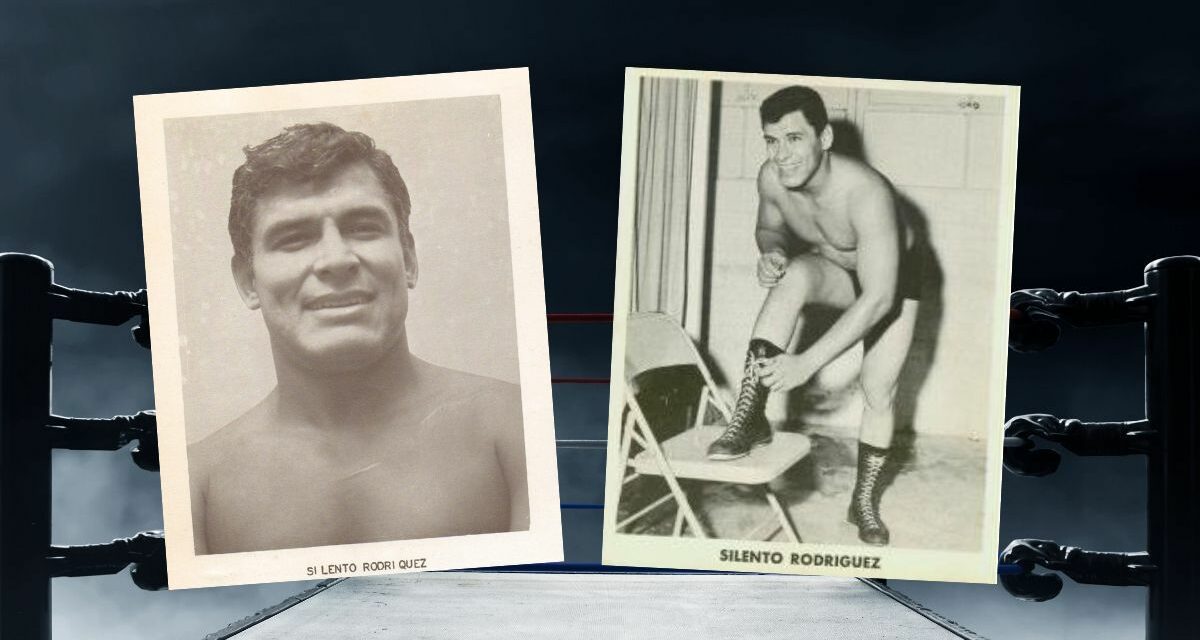Silento Rodriguez, the famed deaf-mute champion wrestler, left a legacy.
His death on April 7, 2024, at the age of 90, didn’t make the headlines, but to the people he inspired, it is a turning point.
“I knew of Silento thanks to one of the wrestling mags that did a great feature story. I was very young but was greatly inspired by the story,” said Handsome Johnny Bradford (Brad McFarlin), who is deaf. “It convinced me that my dream could come true.” Though he never grew large enough to be a wrestler, Bradford became a well-known Michigan manager. They never did meet. “I wanted to become Buddy Rogers and David Rodriguez helped me to believe it could be possible.”
“Silent” Brian Mackey never met Rodriguez either, but he had heard about him, and others had told the Ontario-based “Silent Brian” about him over the years.
David “Silento” Rodriguez was born May 23, 1933, in Monterrey, Mexico, to parents Fransico and Teodora Rodriguez. His hearing loss occurred shortly after his birth, at the age of three.
According to a magazine article, Rodriguez said that he lost his hearing when he followed his father diving off a cliff.
“I was knocked unconscious by the impact of my fall and blood poured out of my ears. For a long time, my parents thought I had injured my brain because I failed to respond when they talked to me. Eventually, they learned I was deaf,” Rodriguez said in the article.
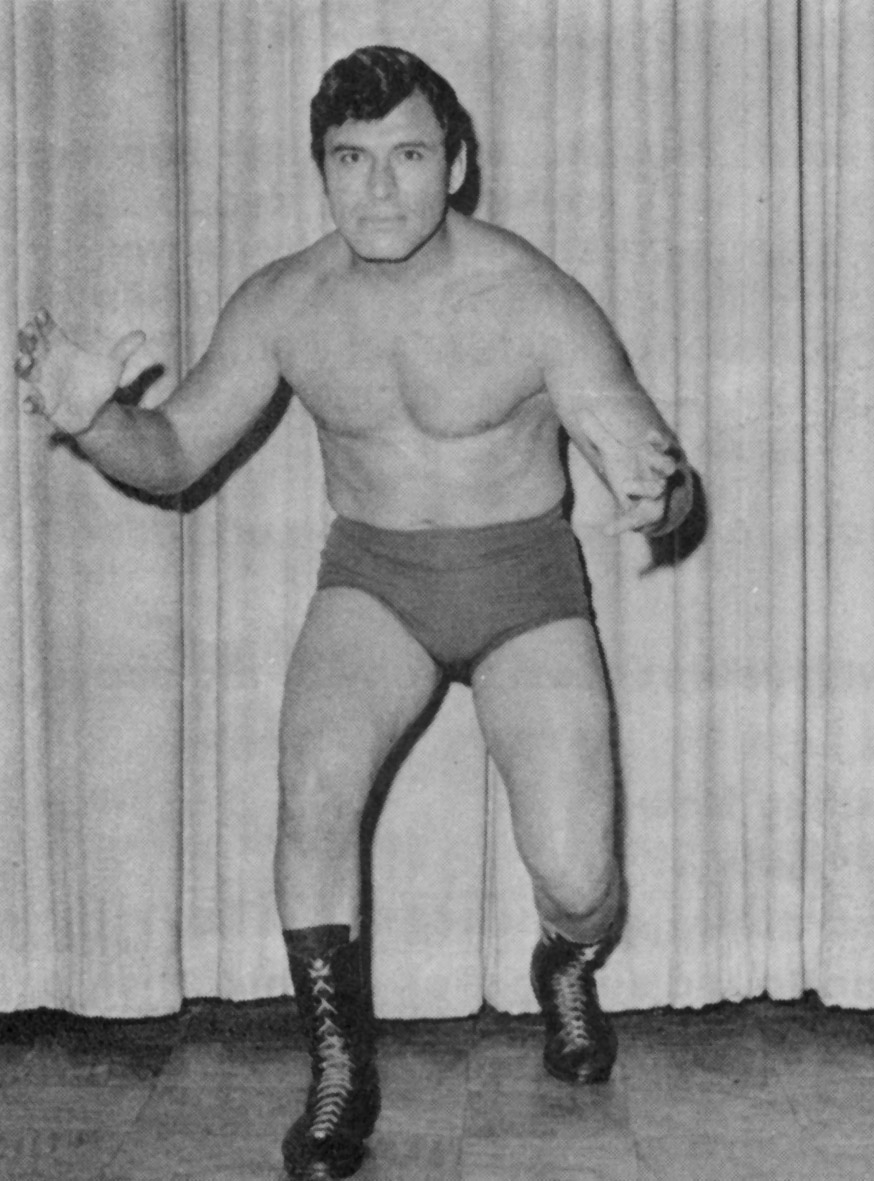
Silento Rodriguez
He had wrestled amateur, so the move to pro in 1951 wasn’t impossible, though communication could be.
Jerry Kozak was a contemporary. “I was amazed how he could move with being deaf and not hearing the crowd. We had some good matches,” recalled Kozak, adding, “we just wrestled,” meaning that it seemed more legitimate since you couldn’t call spots in the ring.
That fluid motion in the ring, a mixture of his amateur background and a heightened sense of movement, combined with an athletic physique and a charming demeanor, made Rodriguez a hit with the fans at ringside, including one who would become his wife.
Spilling out of the ring in Amarillo, Texas, one evening in 1960, Silento fell out of the ring and onto the ankle of a young woman at ringside, bruising it.
“The first time he came to see me,” recalled Peggy Sue, the woman injured by Rodriguez, “he was so embarrassed I just couldn’t be mad at him. After all, it really wasn’t his fault.
“He asked me, in sign language, how my ankle was. I answered, also in sign language, that it would be all right and not to worry about it. After my ankle healed, we started dating.”
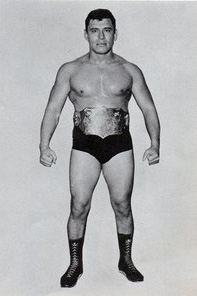
Silento Rodriguez
Eventually, the relationship got serious as Peggy Sue became enchanted by the way Rodriguez tackled life.
“He’s a wonderful dancer. He feels the beat of an orchestra better than most people can hear it, and he’s wonderfully light and graceful on his feet. When I noticed other girls staring at him, I decided I’d better marry him before somebody grabbed him away!”
The pair would wed at the city’s Sports Arena on Thursday, July 7, 1960, this time in the ring. His best man was also his tag team partner for the night, “Silent” Joe Hamilton, another deaf wrestler. Hamilton considered Rodriguez an inspiration, as did other hearing-challenged wrestlers like “Silent” Brian Mackney, a deaf Candian wrestler of the 70s and 80s.
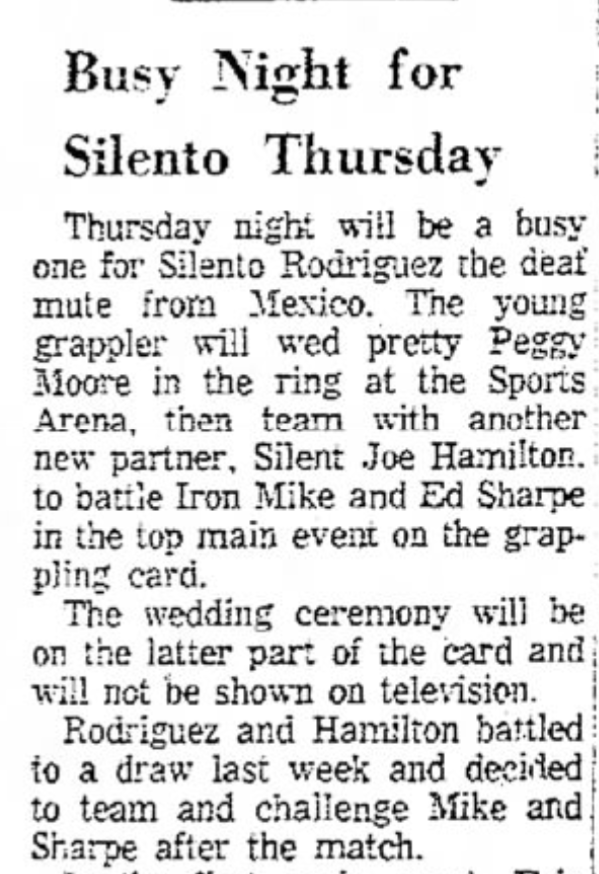
Amarillo Globe-Times, Wed., July 6, 1960
While Rodriguez’s handicap never kept him from success, it undoubtedly impacted his career’s forward trajectory. Despite that, he carved out a tremendous career as a popular babyface throughout the Southern and Western United States in the late 1950s and into the ’60s. Over the course of his career, he’d win numerous regional titles, including the Rocky Mountain Heavyweight Title, the Texas Junior Heavyweight Title, and the Gulf Coast Heavyweight Title, the latter of which he held three times in the ’60s.
Rodriguez was as popular with the fans as he was with his peers.
“Silento Rodriguez was one of my favorite wrestlers as a kid despite the fact that I never saw him win a match,” wrote the late historian Mark Nulty on the Wrestling Classics message board in 2002. “He would always come “this close” to beating a top star in a great TV match. He would be just about to win and miss a third dropkick after hitting the first two or something like that. He would always be teamed with a top babyface on TV against the top heel team, and he would then drop the third fall after a very close match.”
“Everybody loved him,” said Larry Dwyer, who briefly wrestled in the 1980s. “Of course, he’s mute, so he does sign language. But his wife was always a hoot. They’re very gregarious people. They’re just really sweethearts.”
A long-time resident of Round Rock, Rodriguez would often come out to events like Red Bastien’s Texas Shootout reunion.
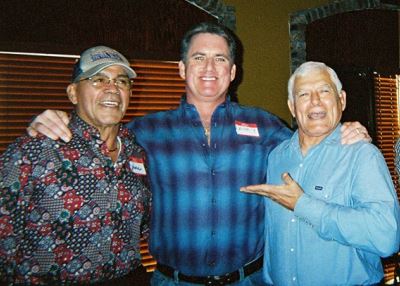
Jose Lothario, Larry Dwyer and Silento Rodriquez in 2015. Photo courtesy Larry Dwyer
Stan Hansen also fondly recalled the family, writing about them coming into LeRoy McGuirk’s Louisiana territory in his autobiography, The Last Outlaw. “I remember Silento Rodriguez bringing his family into the territory. Silento was deaf and couldn’t talk much, but in spite of those handicaps, he was smart, in good shape, and was a good babyface talent. He had been in and out of Louisiana over the years and was considered to be one of LeRoy’s boys.”
Rodriguez also briefly made the jump from the arenas and television shows to film. He was featured in the 1972 documentary Wrestling Queen, which explored the wild world of professional wrestling. The documentary also featured Andre the Giant, the Vachons (Maurice, Paul, and Vivian), Killer Kowalski, Billy Two Rivers, Don Leo Jonathan, and other stars of the era.
His career would eventually wind down in the McGuirk territory, with his final matches coming in 1977.
David Rodriguez was preceded in death by his parents and his wife, Peggy, and survived by his son, David Jr. Services for Rodriguez were held on April 19, 2024, at the Chapel of Ramset Funeral Home in Georgetown, Texas.
— with files from Cory Santos
